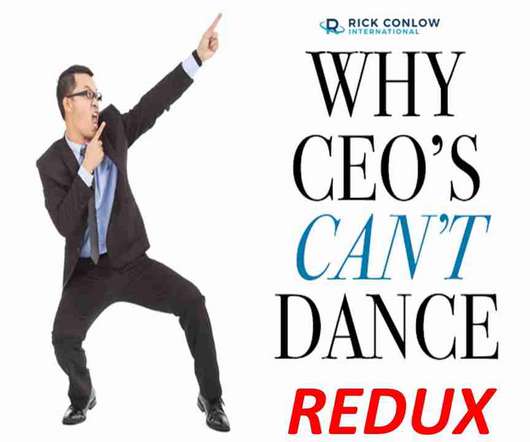Why CEOs Can’t Dance Redux
Rick Conlow
JANUARY 2, 2023
GM market share fell from 62.6% to 17.9%, from 1980 to 2015. CEOs focus on data, facts, figures, and metrics. Do you want to benchmark your career with the habits of extraordinarily successful people? A finance executive said this of the decades-old corporate attitude, “We are GM. We know everything.












Let's personalize your content